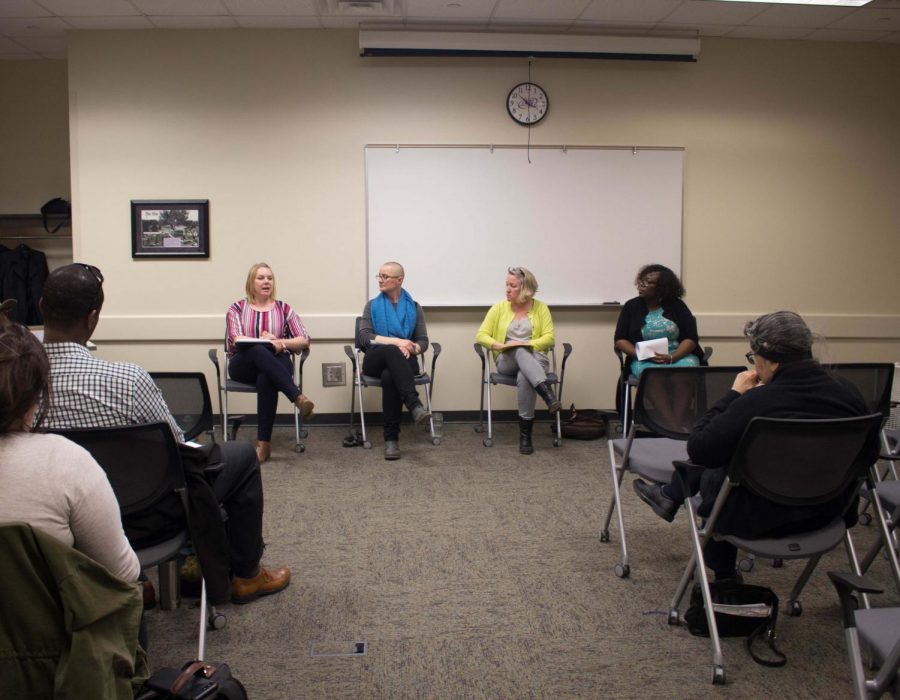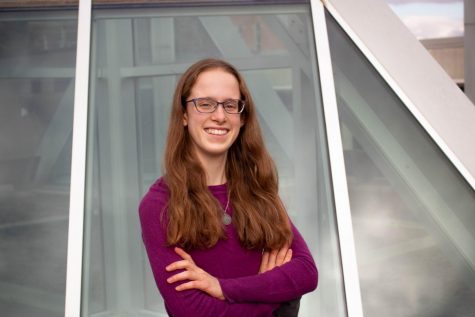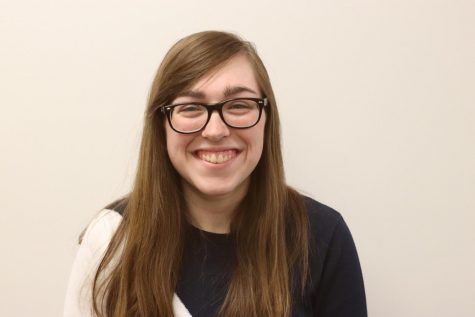Panel discusses race in the classroom
Four UNI professors hosted Classroom Conversations on Race: A Panel Discussion, an event that was held in the Elm Room of Maucker Union on Thursday, March 28.
Apr 1, 2019
“People here in Iowa are so scared of saying anything that is racial out loud, especially white students,” said Carissa Froyum, UNI professor of sociology. “White students are terrified.”
Working against that fear was one of the goals of Classroom Conversations on Race: A Panel Discussion, held on Thursday, March 28, in the Elm Room of Maucker Union. Froyum was joined on the panel by colleagues Anna Kogl, professor of political science, Abbylynn Helgevold, professor of philosophy and world religions and Gaetane Jean-Marie, dean of the College of Education.
Approximately twenty students, faculty and community members attended the panel, which began at 3:30 p.m. Each of the four panelists introduced themselves and explained their teaching philosophy and experiences teaching race in the classroom. Afterward, the floor was opened for audience questions and comments.
One of the most prominent issues raised during the ninety-minute discussion was the question of how teachers can integrate discussions of race into their classrooms. Froyum, a scholar of inequality, said that she covers race in all her courses, regardless of whether the course’s title is directly related to race.
“I use race as an example of all sorts of sociological issues,” she said. “I’m quite confrontational in the classroom.”
Helgevold offered a different viewpoint, stating that she doesn’t consider herself an expert on racial structures but still feels “this kind of moral demand to chip away at that narrative that I know has gone on to perpetuate so many of the assumptions that have shaped the culture in which so many of my students have been raised.”
For teachers who may not know where to start integrating race, Froyum and Helgevold recommend implementing clear ground rules at the start of each course, preferably rules that students help create. Helgevold described an “ouch rule” which she has implemented in her courses, where students can bring the conversation to a halt by saying “ouch” when they feel a line has been crossed.
Kogl discussed the importance of balancing courage with vulnerability in these situations.
“I believe very firmly in trigger warnings, but I also believe that we need to be courageous and engage in these conversations,” she said.
Jean-Marie voiced a similar opinion.
“What better place than the classroom setting to engage in those conversations, to grapple with the issues for shared understanding and shared growth?” she asked.
However, teachers do need to have strategies in place for when emotional tensions boil over in the classroom. Jean-Marie emphasized that educators need to be attuned to student’s bodily cues, even if they aren’t expressing discomfort verbally.
Froyum said that one of her main strategies for facilitating racially charged discussion is to depersonalize the issue by having students apply it to class readings.
“My response will often be, ‘That’s really an interesting question, what would author A say about that?’” she said. “So it’s not about you opining as a student, or me opining, but about how we can apply ideas in different ways.”
Kogl said that she uses a similar strategy through her political science lens by attributing racial issues to societal structures rather than to individual people.
“It’s about these power structures that we all have a place in, but we don’t all have an equal place in,” she said. “We’re not talking about mean people, we’re talking about structures.”
All four panelists emphasized the importance of allowing time for students to process comments and opinions during discussion.
“There’s value in silence,” said Jean-Marie. “A question may be posed, but there’s no need to respond right away.”
She said one of her strategies is to use quick writes, where students jot down their thoughts regarding the issue, either to be shared or collected and compiled by the teacher. Jean-Marie described this as a way to pause and process, while not shutting down discussion entirely.
“I don’t want us to miss the opportunity when it’s critical to do it, and we don’t do it,” she said.
Kogl advised that teachers should “take a deep breath, model a kind of calm, and read what other people seem to be feeling.” She also noted that, based on the situation in question, there could be scenarios in which the teacher should dismiss the class entirely.
The panel concluded with a discussion of the difficulties teachers face in teaching about racial issues when they themselves are not members of the racial minority in question.
“When I first started teaching, I felt awkward about teaching about race—I’m a white woman,” said Kogl. “Eventually, I realized that it wasn’t about me. I could offer readings, ideas, ways of thinking about power.”
She also stressed that even those who aren’t members of minority groups can still be negatively affected by racism.
“One can hate injustice even though one is privileged within the system that perpetuates that injustice,” she said.
Noelle Hulshizer, a senior public relations major, said that she attended the panel out of a personal interest in self-development.
“I have been challenging myself to be more aware of my privilege,” said Hulshizer, and said that the panel offered “a different direction” for the conversation about race.
The four panelists issued a challenge for students, once they’ve become aware of their privileges, to translate that empathy into action.
“I just say, ‘What are you going to do about it?’” said Froyum. “‘Do something, don’t just sit around feeling bad.’”
Jean-Marie agreed.
“What are you doing beyond your formal education?” she said. “Whether or not we have a class about this, we have an opportunity to improve humanity.”










